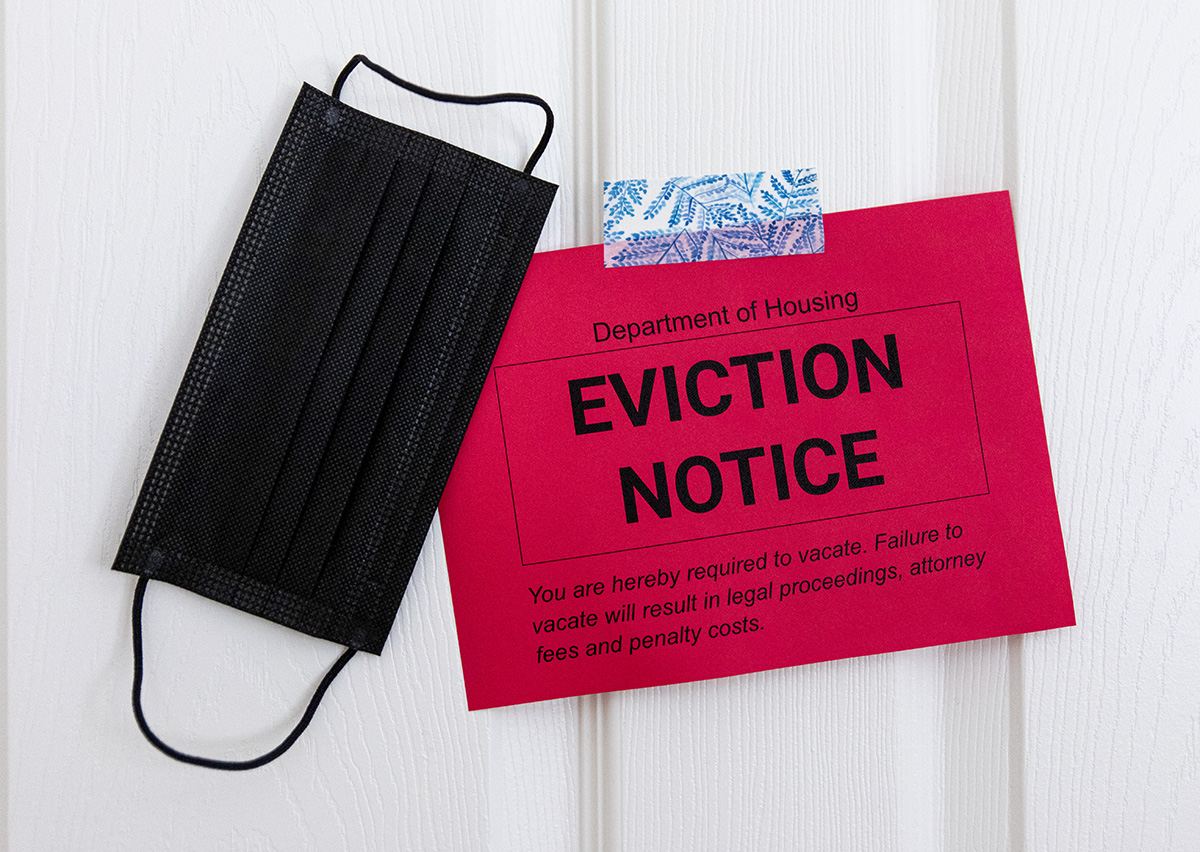Researchers find link between expiring eviction moratoriums, COVID-19 case rates

States where eviction moratoriums expired in 2020 saw significant surges in new COVID-19 cases and deaths, according to a recent UCLA study. (Ashley Kenney/Photo editor)

By Victoria Ke Li
Aug. 17, 2021 12:29 p.m.
Expiring eviction moratoriums may have contributed to a rise in COVID-19 case rates and mortality rates in several states in 2020, according to a recent UCLA study.
Many states implemented eviction moratoriums to protect renters during the pandemic, including California in March 2020. The purpose was to put a stop to forcing people out of their homes and shut down the legal processes behind eviction, especially during times of crisis, said Michael Lens, the associate faculty director of the UCLA Lewis Center for Regional Policy Studies.
Forty-four states had active eviction moratoriums between March and September 2020, according to the study published July 26. However, 27 of those states’ moratoriums expired in the same period, which was associated with an steady increase in new cases and deaths due to COVID-19 weeks later.
According to the study, states that lifted their moratoriums had, on average, approximately double the rate of new cases and five times the death rate months later, compared to states that did not lift their moratoriums.
Eviction forces individuals to move in with friends or relatives or to seek housing in a shelter, said Kathryn Leifheit, the lead author of the study and a postdoctoral fellow of health policy and management.
Living in a shelter or with friends and family leads to close contact with more people, less control over social distancing and an environment that increases your chances of getting COVID-19, she added.
“Everything we know about eviction would indicate that it leads people to crowd into housing or enter homeless shelters, things that we know are problematic and could accelerate the transmission of COVID-19 on a community level,” Leifheit said.
States could have prevented more than 10,000 COVID-19 deaths if they chose not to lift their eviction moratorium as soon as they did, said Fred Zimmerman, a co-author of the study and a professor of health policy and management. The study also found that the expiring moratoriums may have caused 433,700 additional cases nationwide.
California extended its statewide moratorium through Sept. 30 in June, and the Centers for Disease Control and Prevention also recently extended the federal moratorium through Oct. 3, citing the need to prevent a sudden rise in cases amid a nationwide surge due to the delta variant.
According to a UCLA study co-authored by Lens and published July 29, a tenant in Los Angeles can face with the threat of eviction under the current Los Angeles County moratorium. However, the courts cannot proceed with the eviction until the moratorium is lifted.
States that implemented these weaker moratoriums that only block the enforcement of an eviction also saw a more rapid rise in the number of new COVID-19 cases and deaths, compared to states that blocked the entire eviction process from start to finish, Leifheit said. The speed of evictions essentially determined the speed of the surge in COVID-19, she added.
[Related link: UCLA community members express concerns about access to rent relief programs]
Pandemic-era policy has stopped evictions from happening for a year and a half in many states, and the government has allocated over $40 billion in emergency funding for rental assistance, Leifheit said, adding that such policy was unprecedented until now.
However, there has not been a system devised that will help people with lower incomes or people who were impacted the most get back on their feet after the pandemic, Lens said. He added that while there are accessible options such as granting aid with checks, they are not proportional to every individual’s need.
“Getting the right amount of money in the right peoples’ hands becomes pretty challenging,” Lens said.
Zimmerman said the long-term issue is the need for affordable housing in California. The state has not met the population’s housing needs for 40 years, and there are increasing restrictions on the number of people that can live in LA County, he added.
“Housing is essential for health in all kinds of ways, and adequate housing protects people from many health hazards, including from pandemics,” Zimmerman said.
Contributing reports from Sarah Nelson, Daily Bruin reporter, and Christine Tran, National news and higher education editor.

